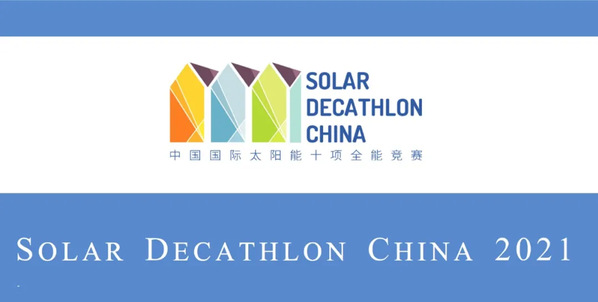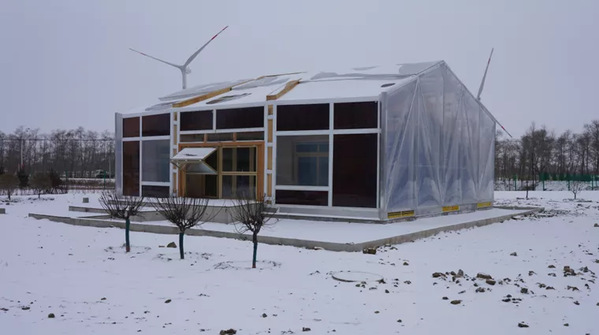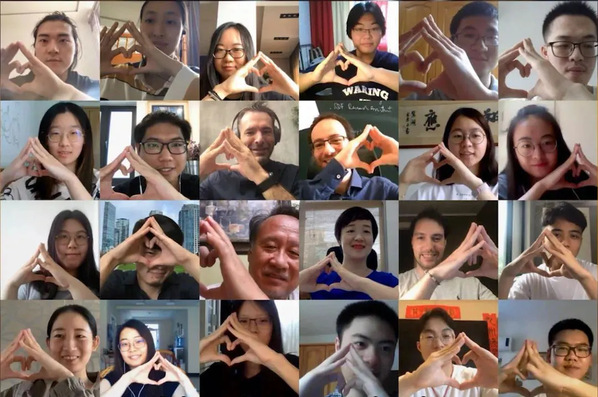What comes to you when talking about the 2022 Winter Olympics? Fast and fierce actions on the slopes? The cute panda mascot Bing Dwen Dwen? The world has gone warm over the Games since its opening. Want to know how ZJUers contributed to the Games? Let's turn the spotlight on the Solar House, a Demonstration Project in the host city Zhangjiakou jointly designed and built by an international team, Y-Team composed of students and faculty members from the Zhejiang University-University of Illinois Urbana-Champaign Joint Institute (ZJUI), Xi'an Jiaotong-Liverpool University and Thomas Jefferson University. .
Sustainable housing project for a shared future
As a Demonstration Project exhibited in Zhangjiakou, the co-host city of the 2022 Beijing Winter Olympics, the solar housing project was an outcome of 2021 Solar Decathlon China (SDC21), the competition held in Zhangjiakou in September 2021. The project illustrated the very idea of SDC competitions, namely, to design and build sustainable housing projects that can respond to people's daily realities and regional development.

SDC21 invited fifteen teams qualified for the finals to build competition prototypes to meet a triple challenge in the context of the host city Zhangjiakou: sustainable development, smart connection and human health. The solar house designed by Y-Team was maintained as one of the facilities serving the 2022 Winter Olympics, as living lab of the National Renewable Energy Demonstrative Zone, and as model for regional sustainable development.
Cross-disciplinary team of Structure, Architecture and Interactive AR
With more than 100 members from three universities, Y-team is a cross-disciplinary team of Civil Engineering, Electrical Engineering and Computer engineering. Built in September 2020, the team was an integration of many realms: structure, architecture, landscape, HVAC, and interactive-AR.
After one year's cooperation and preparation, the team finished the scheme design and proposal, and carried out the roadshows in Suzhou, Nanjing and other important cities. In October 2021, Y-Team reached Zhangjiakou and brought the blueprint to life within only thirty-two days.

Solar house designed and built by Y-Team
Including 10 ZJUI students, the team was selected as one of the 15 finalists of SDC21. ZJUI Assistant Professor Cristoforo Demartino and Qiushi Distinguished Professor XIAO Yan mentored the Structure Group of the project.
Team spirit matters
ZJUI members of Y-Team were mainly responsible for Structure and Interactive-AR of the project. The undergraduates from ZJUI's Civil and Environmental Engineering and Computer Engineering played a crucial role in many key processes such as structural calculation, model construction, material processing and on-site assembly, from which the team spirit also found best expression.
"Y-project is the result of the ZJUI team's joint exploration, continuous innovation and unfailing improvement," said DONG Siyi, a team-member from the major of Civil Engineering.
Noticeably, the main materials used in the solar housing project were bio-based and processed at the Zhejiang University (Ninghai) Joint Research Center for Bio-based Materials and Carbon Neutral Development. Beams and columns used in the framework were all made of new bamboo-based composite materials developed by Professor XIAO Yan's team.

Some instructors and members of Y-Team
"Many thanks go to Professor XIAO and my teammates," said ZHENG Zihan, an undergraduate in ZJUI's Civil Engineering. "Through this project, I was able to gather my scattered knowledge into a whole," she continued in great satisfaction.
Writers: ZHANG Jinmei, YAN Xiaoyu
Editor: TIAN Minjie
Photos credit: Y-Team, 2021 Solar Decathlon China






